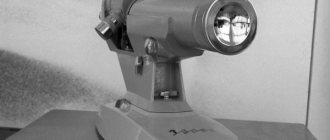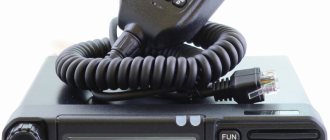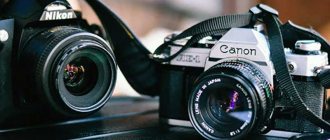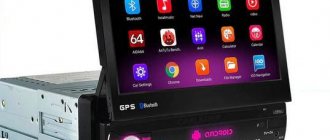Stargazing is of interest not only to professionals, but also to amateurs who cannot imagine life without the starry sky. But even for experienced astronomers, choosing the best telescope for your home is not easy.
People's choice:
| Model | Price |
| 1. Sturman HQ2 60090 AZ | from 20,000 rub. |
| 2. Levenhuk Skyline BASE 70T | from 15,000 rub. |
| 3. iOptron SmartStar-A-R80 Pulsar Purple | from 27,000 rub. |
| 4. Celestron Travel Scope 80 | from 16,000 rub. |
| 5. Veber PolarStar 900/90 AZ | from 24,000 rub. |
mini telescope rating
Types of telescopes
Different telescopes
There is a long list of devices for observing stars on sale:
- refractory ones - they are often called lens ones - are simple, reliable and have a minimum of manual settings;
- reflex or mirror; their main element is a mirror, due to which the image never loses clarity;
- catadioptric or hybrid - absorbed all the best from previous models and are based on two schemes;
- chromospheric – designed for images of the solar chromosphere.
How to choose a telescope for beginners
Choosing a telescope for beginners
It is very difficult for amateurs to decide on their first device, since they cannot decide on the most important parameters.
There are only a few of them:
- focal length;
- optical design;
- lens diameter;
- zoom ratio;
- mount or stand.
You also need to take into account your own experience. For beginners, price and ease of setup are important. But more advanced astronomers can concentrate on performance, choosing quality and innovative technologies.
Focal length
This definition means a segment between 2 points:
- lens (mirror);
- convergence of rays.
Its value reflects how far the device can look. The optimal distance is 700 mm.
Important! When choosing a telescope, you should not rely on focus. After all, the same distance with different lenses gives different results. Therefore, it is not advisable for beginners to “chase” this parameter.
Optical design
In simple terms, the optical design is the way the telescope will show objects in space. It is also called the eyes of an astronomer.
Optics circuits are divided into 2 large categories:
- refractors;
- reflectors.
The first are lens type optics. Such schemes:
- easy to use;
- are distinguished by clarity;
- they are inexpensive.
Reflex circuits are mirror optics. They require more careful attention and are more expensive.
Lens diameter
Depends on the diameter:
- image quality;
- capture level.
For beginners, models with a diameter of 150 mm will be sufficient. With such equipment it is possible to observe nearby objects.
Hobbyists and professionals will need 200-400 mm. With their help, observation of distant cosmic bodies is carried out.
Zoom ratio
None of the instructions indicate the multiplicity. This is due to the fact that for each device it is calculated individually and may vary. The calculation formula is simple: focal length of the device / focus of the eyepiece. By changing the eyepiece, the astronomer will also change the zoom ratio.
Important! Beginners rely on higher multiplicity. But 20-100x will be enough for them.
Mount or stand
The mount is a special support with a rotating mechanism. They are divided into several categories:
- azimuthal - movement occurs vertically and horizontally;
- equatorial – adjustment is made to a parameter such as latitude;
- Dobson's is a mixed type, one of the heaviest.
For novice astronomers, the azimuthal option is suitable:
- easy;
- collapsible;
- inexpensive.
The equatorial stand is relevant for large and heavy devices that are purchased by professionals.
Universal designs for beginners
Veber 400/80 AZ
Our rating opens with a design characterized by its compactness, excellent aperture ratio and reasonable cost. The telescope is perfect for long trips into nature, but it can be installed at home or in an apartment. The eyepiece is equipped with a Schmidt prism, the image is straight, not mirrored. The maximum magnification is 160 times - through such a telescope you can see lunar craters with a diameter of about 7-8 km, see the rings of Saturn, the clouds of Jupiter, and so on. The lens here is achromatic, due to which the picture is as clear and sharp as possible across the entire field of view - there is no distortion or coloration at the edges.
Particular attention should be paid to the ocular part. It is located at an angle of 45 degrees to the axis of the device, and, if necessary, can rotate, locking in one of eight positions. Thanks to this opportunity, observation becomes more comfortable - you can look at the starry sky both in a standing and in a sitting position. The picture is straight, not mirrored. The design provides an azimuth mount, which even a child can handle, there are two micrometric handles responsible for pointing, and a viewfinder is also installed. Thanks to all these elements, the telescope can be accurately aimed at the target. A tripod is not included in the kit; it will have to be purchased separately.
More: Top 10 best table hockey games
Advantages:
- The parameters are balanced just perfectly;
- One of the lightest in our entire review - its weight is only 4 kg;
- Reasonable price.
Flaws:
- The mount should be handled with the utmost care - there is a high probability of damaging it.
Veber 400/80 AZ
2. Levenhuk Strike 80 NG
A refracting telescope is lightweight and can be carried in one hand if necessary. When disassembled, the dimensions are small - about 80 cm, so you can even travel with such a telescope on public transport. The design includes a wrapping prism, due to which the picture is not inverted, but straight. The telescope is considered universal, since it can also be used to observe earthly objects; it is used even during daylight hours. The pipe of the device is painted white and practically does not heat up in direct sunlight. The build quality of the device is excellent. The design is very neat and reliable.
The viewfinder has a red dot called Starpointer, which makes it even more convenient to use; finding the desired object in the sky is quite simple. Before you begin observations, it is worth aligning the viewfinder coaxially with the main tube of the product. The focuser is made of high-quality plastic with increased rigidity, is characterized by a soft stroke, and there is no play. The telescope has an alt-azimuth Yoke mount, which makes the product lighter and easier to control. There is a special lens hood that is designed to provide high-quality protection of the lens even from strong impacts and dew. It installs on the tripod very quickly. A special planetarium program is supplied with the telescope, there is also a book for beginner astronomers and a compass. All these points allow you to quickly master the basic skills of using a telescope for its intended purpose.
Advantages:
- The highest useful magnification is 360x;
- The viewfinder is equipped with a red dot;
- The kit contains everything you need for comfortable work with this equipment.
Flaws:
- The aperture ratio is rather weak, so it is recommended to use the telescope exclusively for observing dim celestial bodies.
Levenhuk Strike 80 NG
1. Celestron AstroMaster 130 EQ
This is a very functional product, which is characterized by excellent quality of both assembly and the resulting image. The optics here are powerful, all mechanical elements are reliable, and using this telescope is very easy. Through it you can view a lot of space objects, and the picture will be bright and contrasting. The design is modern and interesting. Such a telescope will be most suitable for a person who is seriously interested in astronomy. Using this equipment, you can view many stars in our galaxy, various constellations - Sagittarius, Aquila, Scorpio, Cassiopeia and many others. It is quite natural that through a telescope it will be possible to see all the main planets of our solar system, various nebulae, and so on.
The kit comes with a viewfinder with a red dot, in addition, there are two eyepieces, the diameters of which are 10 and 20 mm. The first allows you to get a picture enlarged by 33 times, the second – by 65 times. With such eyepieces you can quickly catch the desired object. 2x and 5x Barlow lenses provide high power to the telescope, and there are also special filters for the moon and stars. At maximum settings, you can get a magnification of 307x - in this case, you will be able to see craters, paths, famous Martian canals, and so on.
Advantages:
- Reasonable cost;
- High image quality;
- Sturdy and reliable assembly;
- Insignificant mass.
Flaws:
- At first, catching a celestial body through the lens will be quite problematic.
Celestron AstroMaster 130 EQ
How to choose the best telescope based on price and quality
Selecting a device is quite difficult even for experienced buyers. Moreover, each category of astronomers needs “its own” equipment.
For a child
For a child
Children often change their interests. Therefore, if a schoolchild begins to “rave” about the night sky, you should not buy an expensive model for him. And there are many reasons for this:
- the child may not like stargazing;
- it will not cope with the adjustments;
- Expensive devices require additional purchase of a lot of eyepieces.
A telescope with the following parameters is suitable for schoolchildren:
- azimuth support;
- diameter up to 70 mm;
- simple adjustments.
This option makes it possible to observe ground-based and nearby space objects.
For astronomy lovers
For astronomy lovers
If your hobby becomes serious, you need to take care of purchasing the appropriate equipment. For this purpose, you can choose both refractors and reflectors.
Among the main parameters, it is important to pay attention to the diameter - 90-130 mm. This is enough to observe objects of different ranges from within the city. But in megacities the quality of observations is poor. Therefore, it is worth taking a closer look at mobile models with a diameter of 250 mm. Such devices are transported and installed outside the city, where the sky is clearer.
Another step in fascination with the sky is astrography. Devices with this option make it possible not only to observe, but also to photograph stars. For some hobbyists, their hobby becomes a stable source of income.
For deep space
Professional equipment requires powerful and high-quality optics. The following type of device can handle the observation of galaxies and nebulae:
- reflector;
- diameter from 250 mm.
Important! The multiplicity in this case loses its meaning. Even the minimum value will give a good result.
Rules for choosing a telescope
A telescope is a device that allows you to view objects at a great distance. In appearance, it resembles a pipe in which lenses are located, which have the property of collecting light. At the other end there is an eyepiece, through which objects or phenomena are observed.
Before purchasing, you need to decide for what purposes it will be used.
Purposes and purposes of using the telescope:
- For reference (first device);
- Children's;
- To observe the planets;
- To observe space objects;
- With the ability to move the device;
- To create astrophotography;
- For observing objects on the ground.
The criterion for choosing your first telescope should be the size of the refractor. The size should vary from 70 to 130 mm. This value will be quite sufficient for those who want to familiarize themselves with the operation of the telescope and make their first observations.
When buying a device for a child, it will be enough to choose an instrument with a refractor from 70 to 90 mm. This will make it possible to observe the starry sky quite comfortably.
In order to observe the planets, the best choice would be telescopes with a refractor from 120 to 150 mm. Such devices do not have central shielding, but allow you to see a bright picture.
When choosing a device that will allow you to observe deep space objects, it is better to opt for reflectors ranging in size from 200 to 250 mm, which will be on Dobsonian mounts.
If you have not yet decided what objects you want to monitor, there are also universal models. The best option would be an optical telescope with a size of 100 to 120 mm or a Maksutov-Cassegrain telescope with a size of 90 to 120 mm.
There are also models of mobile telescopes that operate based on the Maksutov-Cassegrain system. Their weight is quite light and their dimensions are compact, which makes it possible to move them to any place. In addition to this model, there are short-focus optical devices.
A device intended for astrophotography has a long exposure time and must have a stable equatorial mount. It must be equipped with an electric drive.
For observing terrestrial objects, an excellent option would be a short-focus optical telescope or a Maksutov-Kassegner instrument, which should have a wrapping prism. Due to this, the image will be straight. They are usually installed on photo tripods for ease of observation.
It is important to remember that instruments that are intended only for observing stars or planets will not provide direct images. Also, such devices will not be able to focus on close objects.
Once you have decided on the purpose of the device, you should make a choice based on the budget that you are willing to spend on this purchase. The price of models can vary quite widely. It is for this reason that it is worth clearly defining the budget. The cost is also affected by the purpose of the device.
The best telescope manufacturers
Large companies have been operating in the market for several decades. They produce not only professional, but also simple budget models. Their devices are distinguished by consistent quality and a wide range of additional options.
The list of the best companies includes:
- Veber - the company emerged in the late 90s of the last century and quickly became a leader due to innovative technologies and a wide range. It produces telescopes, binoculars, optics and elements for various devices.
- Sky-Watcher is a Canadian company on the market for over 40 years. It produces more than 15 lines of telescopes for different budgets, as well as components, accessories, and binoculars.
- Bresser is a German brand that creates products of different complexity categories. The list of items produced includes binoculars, microscopes, eyepieces and more.
- Celestron is an American brand that has been on the market for more than half a century. Its products are renowned for innovation. The most significant percentage in product positions is occupied by telescopes.
- Levenhuk is a Russian company that originated in the USA at the beginning of the 21st century. She is responsible for the latest lines of telescopes and other optical equipment.
Review of the best telescopes for children
Children's models have a number of distinctive features:
- diameter of achromat refractors up to 80-90 mm;
- altazimuth mount;
- ease of use.
Their main feature is their non-inverted image. While amateur and professional devices require adjustment.
Sturman HQ2 60090 AZ
Classic Sturman HQ2 60090 AZ
A classic model with good equipment, which includes several eyepieces, gives a direct image.
Characteristics:
- focal length 600 mm;
- lens diameter 90 mm;
- multilayer coating;
- maximum magnification 180x.
Advantages and disadvantages
ease of operation
tripod adjustment
possibility to connect the camera via adapter
lack of automatic guidance
The average cost of the device is 20,000 rubles .
Positive reviews are often written about the telescope. Users mention:
- photos of distant and near objects;
- good viewfinder 6 x 30.
Levenhuk Skyline BASE 70T
Levenhuk Skyline BASE 70T Refractor
A classic type refractor that stands out for its clear image. With its help, the lunar surface becomes closer, which delights young astronomers.
Characteristics:
- six-fold optical finder;
- classic mount;
- diagonal mirror;
- 70 mm lens.
Advantages and disadvantages
lifetime warranty
light weight – up to 3 kg
auto-guidance
the need to periodically repeat focusing
The price of the device is affordable - 15,000 rubles .
Users call the model a good and high-quality telescope for beginners. They also note that the optics remain transparent even after years.
iOptron SmartStar-A-R80 Pulsar Purple
Beautiful model iOptron SmartStar-A-R80 Pulsar Purple
Beautiful model with a bright design and a remote control with an LCD display. Its characteristics:
- Mount The Cube;
- 25 mm stainless steel on a tripod;
- rigid fixation system;
- 80 mm lens.
Advantages and disadvantages
GPS module
sharp image
more than 5,000 objects in the database
high price
Disadvantages - high cost, reaching up to 27,000 rubles in some regions.
Owners of the device especially positively note:
- focal length 400 mm;
- set with two additional eyepieces;
- the opportunity to observe the stars, the Moon and other objects.
The best telescopes for deep space
3. Synta Sky-Watcher BK 1149EQ1
This is a fairly high quality Newtonian reflector equipped with an EQ1 equatorial mount. Thanks to this device, you can see many galaxies, various star clusters, nebulae and other space objects located at a distance of a huge number of light years from the Earth. The manufacturer claims that this telescope is even suitable for observing closer objects belonging to the Solar System - planets, asteroids, comets, satellites, and so on. The image is quite bright, there are no chromatic aberrations of any kind. The design provides a very convenient optical finder. The telescope comes with two eyepieces - their diameters are 25 and 10 mm. The first is intended to obtain an overview image, the second is used to study the selected space object in more detail.
More: Tecno Spark 7 smartphone – full review of an inexpensive smartphone
The optical tube is placed on a special equatorial mount, with the help of which it is possible to compensate for the daily movement of objects across the sky. All mechanisms are characterized by smooth movements, no jerks are provided. If necessary, an electric motor powered by a lithium-ion battery is placed on the right ascension axis. It is not included in the kit and must be purchased separately.
Advantages:
- Very high performance in terms of aperture ratio;
- If necessary, you can install various kinds of accessories;
- Spherical image aberrations are completely absent.
Flaws:
- Quite a serious weight - it is 11.7 kg, not very convenient to take on foot;
- The power of the eyepieces leaves much to be desired; astronomers recommend purchasing additional ones to get a better picture.
Synta Sky-Watcher BK 1149EQ1
2. Levenhuk Skyline 76×700 AZ
This model, like the previous one, is made on the basis of a classical optical design - a Newtonian reflector. This design is ideal as a first instrument for a novice astronomer who is just taking his first steps in this field - the telescope does not weigh too much (it can be conveniently transported as ordinary hand luggage), is affordable and easy to use. The optical design does not distort colors; such chromatic aberration often appears in inexpensive lens models; it is best visible at the edge of fairly bright objects. The telescope comes with everything you need for comfortable observation.
The telescope mirror has a diameter of 76 mm, thanks to which it is possible to collect about 100 times more light compared to the naked eye. Thanks to this quality, it is possible to consider not only the planets themselves, but also their large satellites. It shows well objects located far from the solar system - galaxies, nebulae, various kinds of double stars or clusters of stars. All mirrors are coated with protective compounds, which ensure a long period of operation of this equipment. The telescope tube is made of lightweight aluminum alloy and is mounted on a manually controlled alt-azimuth mount. The set includes a tripod, which can be adjusted in height if necessary; it has a convenient shelf for various accessories. The optical finder has a six-fold magnification, so you can easily find the desired object. The eyepiece lenses are made of glass and are multi-coated. The maximum useful magnification is 150x.
Advantages:
- Suitable weight for manual transportation;
- Reliable and stable tripod;
- Acceptable aperture ratio;
- If desired, you can install various kinds of accessories.
Flaws:
- The telescope does not come with the most powerful eyepieces.
Levenhuk Skyline 76×700 AZ
1. Celestron NexStar 130 SLT
This telescope belongs to the latest series of devices equipped with computer control. This design is designed specifically for people who have just begun to comprehend the basics of observing celestial bodies. In the production of the telescope, the latest technology for automatically pointing to objects was used; the control system here is intuitive. The kit comes with a number of additional components that make the telescope completely ready for use. The setup process is carried out through a special computer application, and there is no need to even know the names of the stars. The telescope itself will point its lens at the object selected in the existing database.
This allows you to significantly save time on checking with star maps. This telescope is equipped with the most modern software; if necessary, it can be updated via the Internet. The connection between the telescope and the mount has been modernized, so if necessary, you can quickly change the optical tube. To make the design as stable as possible, steel tubular tripods are used instead of aluminum tripods, which, if necessary, can easily absorb even serious vibrations.
Advantages:
- Computerized telescope;
- The kit includes a remote control;
- Sufficiently high aperture ratio;
- Controlled using a special computer application;
- The highest magnification can reach 307x.
Flaws:
- Expensive.
Celestron NexStar 130 SLT
The best telescope in the world
The title of “the best, most functional and largest telescope in the world” was shared by several installations:
- VLT installed in the Andes;
- SALT, located close to Cape Town;
- two KECK installations in Hawaii;
- GTC parked in the Canary Islands.
The telescopes listed have mirror widths from 8 to 10.5 meters.
There is another unusual telescope model - the orbital Hubble. Its capabilities are maximally expanded, despite its small size.
Buying a telescope can be a step into a new and exciting world, and for some, the path to a future profession begins with the first simple device.
Top 7 best telescopes video










